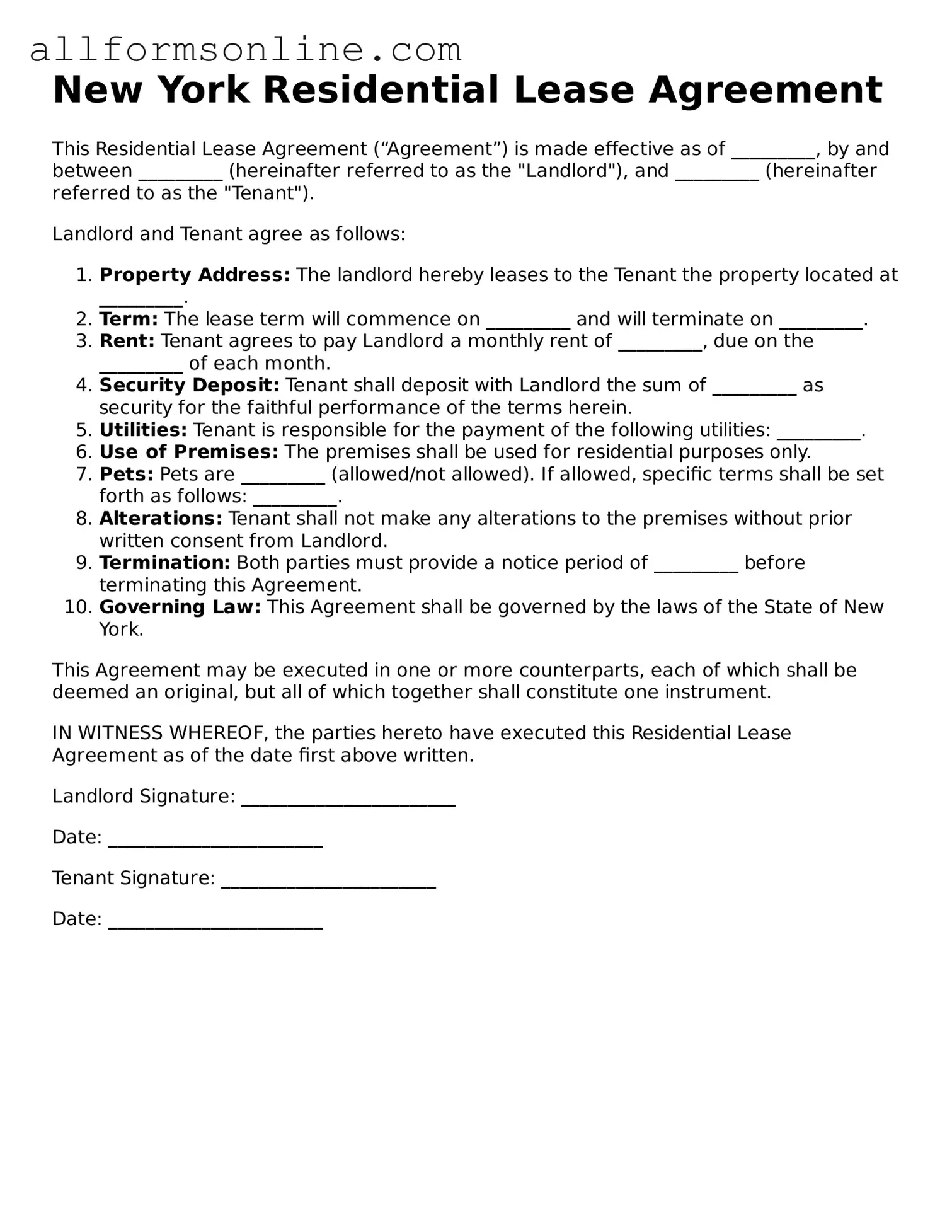What is a New York Residential Lease Agreement?
A New York Residential Lease Agreement is a legal document that outlines the terms and conditions between a landlord and a tenant for renting a residential property. It specifies the rights and responsibilities of both parties, including rent amount, lease duration, and maintenance obligations.
What key elements should be included in the lease agreement?
Essential elements of a lease agreement include the names of the landlord and tenant, the rental property's address, the lease term (start and end dates), the amount of rent, payment due dates, security deposit details, and any rules regarding pets or smoking. Additionally, it should outline maintenance responsibilities and procedures for terminating the lease.
How long is a typical lease term in New York?
In New York, lease terms can vary. Most residential leases are for one year, but shorter or longer terms are also common. Month-to-month leases provide flexibility, allowing tenants to stay without a long-term commitment, but they can be terminated with short notice by either party.
Can a landlord raise the rent during a lease term?
Generally, landlords cannot raise the rent during a fixed lease term unless the lease specifically allows it. For month-to-month leases, landlords can increase rent by providing proper notice, typically 30 days, but they must comply with local rent control laws if applicable.
What happens if the tenant wants to break the lease early?
If a tenant wishes to break the lease early, they may face penalties as outlined in the lease agreement. Common consequences include losing the security deposit or being required to pay rent until the landlord finds a new tenant. However, certain situations, like domestic violence or health issues, may allow tenants to break the lease without penalties under specific laws.
Are there any specific disclosures required in New York leases?
Yes, landlords in New York must provide certain disclosures in the lease agreement. These may include information about lead-based paint if the property was built before 1978, as well as details about the presence of mold or other health hazards. Additionally, landlords must disclose whether the building has been subject to any rent control or rent stabilization laws.
What should a tenant do if they have a dispute with their landlord?
If a tenant has a dispute with their landlord, they should first try to resolve the issue through direct communication. If that fails, they can seek mediation or file a complaint with local housing authorities. Legal action may be necessary for serious issues, but it is advisable to consult with a legal professional before proceeding.
